Yuliia Kyzyk & Sara Isteffan
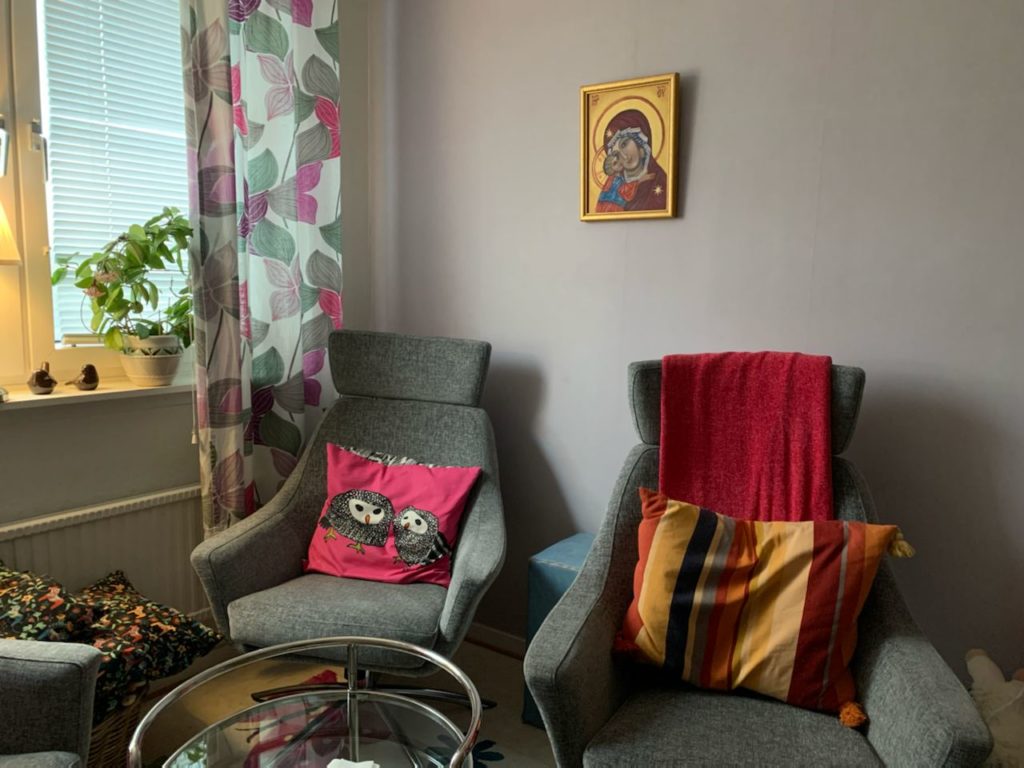
Shelter for victims of domestic violence
Photo: Yuliia Kyzyk
The story below describes one of many situations in which women have felt neglected when trying to find safe housing after reaching out for help. It is shared by the shelter staff following the victim’s case. The name of the victim has been changed for safety reasons.
From home to shelter: what victims of domestic violence may go through
Linda was living her life with her husband and two children. She had a job and a social life with her friends. Domestic violence was slowly starting to take its place. The man that she once knew to be her husband, has now started to act violently. Fights, fear, and fatigue became Linda’s everyday life. Until one night, when everything escalated. The neighbours reacted to their violent yelling coming from the apartment. As it got worse, the police were called and Linda and her two children were taken to the Social Service Agency. Their life changed in one night. From being in a home to sitting in a police car driving into an unknown direction. The family was placed in a temporary shelter, not far away from home. When the Social Services realized that it was too dangerous for them to stay close to their abuser, the family needed to be placed in another city. They had to leave everything behind, and flee for their lives.
The Social Services settled the family in another city, with no directions, and lack of support. When the Agency discovered that Linda had an income in the form of a sick leave benefit, they gave her one week to find herself a new home. This made Linda and her two children feel neglected by the system. Instead of being helped and protected, they needed to face more complicated requirements with no further support. Linda reached out for help and support in her home municipality. They stated that since she has an income, and has spent a few months in the new city, she should seek help there, and live in a hostel alone with her children until they can find a stable home. This meant that Linda and her two children became homeless while searching for a stable home. The two municipalities did not do a proper ‘handing-over’ of her case, which re-traumatized the family as Linda had to explain her situation over and over.
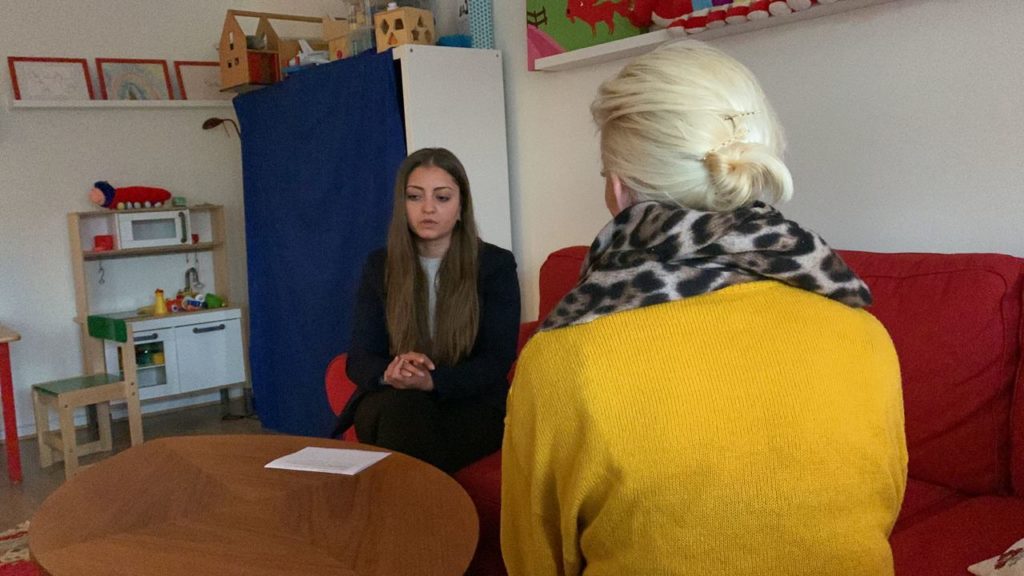
Interview with social worker at a shelter
Photo: Yuliia Kyzyk
Reporter: Sara Isteffan
“No one takes accountability and follows through the whole process all the way for the victim. Especially in cases where the woman and the children need to be placed in another city, there is no thorough handing-over of her case. They just tell the woman to seek help in her new home municipality, and that they cannot help her anymore. This especially occurs in cases where the woman has some sort of an income, such as a sick leave benefit.”, says the shelter staff, prefers to stay anonymous
Linda eventually found a place to live. However, the process of dealing with different agencies took several months. Not only did she face these hindrances and complications, but she had to deal with her trauma while at the same time trying to provide for- and protect her children all alone.
The lack of accessible housing is causing the victims to go back to their abuser
The women staying in a temporary shelter do often get their stay prolonged because of the lack of accessible housing. The police officer Markus Antonsson explains that the women’s well being is to have a safe home to go to. And when that is taken away because of their abuser, it does not only create loss and confusion, but also fear of not knowing where they will end up. Petersson adds: when their stay gets prolonged, or when the Social Services asks them to be on their own, oftentimes the women ends up going back to their abuser. Not because they want to, but because they want to have a place to stay.
“The housing issue is extremely important and a lot of times, it is a crucial retention factor for the woman not to leave because she does not see any other way out.”, states Markus Antonsson, Police Officer and Manager in the section of domestic violence
Roger Höög, a federal lawyer for the Tenant Association, explains that the housing issue is not the only problem. What creates hindrance for these women is also the long queue time to get an apartment. In a lot of cases, the women are in debt and often registered at the Enforcement Authority because of the financial violence their abusers have exercised against them. These problems show that there is a lack in the system in terms of handling certain applications to prioritize such vulnerable groups to override the queue time.
Höög further explains that Gothenburg is lacking between 5.000-15.000 apartments today. So, the lack of housing is not mainly an issue for vulnerable groups in society, but for all citizens in general. The queue for renting an apartment in Västra Götaland takes between two to ten years. When looking at a vulnerable group, such as victims of domestic violence, they should be considered of a higher priority, especially if they have children since they are only allowed to be placed in a shelter between three to four months. Researcher Joakim Petersson also acknowledges that the shelter periods for women are prolonged in most of the cases.
“What we can see is that a lot of victims stay there longer and longer. Because they don’t have any options to go elsewhere after that state”, says Petersson
The map below represents an overview of the queue time for renting an apartment in Västra Götaland for the year 2022. The visualization is based on data from the housing agency Boplats. The queue time represented in these areas, are a few of many examples selected to provide an approximate understanding of how the housing system works and how the queue time is hindering the women to get a new apartment.
“When the shelter stay ends, some of the victims have to go to a hotel room or a hostel. The women oftentimes don’t want to stay there, so they go back to their perpetrators. Some of victims actually get murdered afterwards, because they don’t have any place to go”, states Petersson
A psychotherapist, specialized in working with women suffering from domestic violence, explains that: women who attend the shelter are directly sent from the Social Service Agency. The Agency assesses if the woman is in need of protection. In cases where protection is needed, the victim can stay for a maximum of four months. After this period, the woman should either be placed in another shelter, or in another type of housing. And while the woman is placed in a shelter, the Social Service Agency is accountable for following up her case.
“While in the shelter, the risk assessment is not only to prove that the woman is homeless, but also that she is in need of protection”, says psychotherapist Annika Eklund Erikson
During the period of placement in a shelter, the women and children are supposed to get psychological help, assistance to find a new apartment, food aid, protective identity, help during hearings with police officers, and time for communication support. This ideal is unfortunately not upholding the actual state.
“When the social services finally place the woman and her children in a shelter, they often become ‘forgotten’. There is no thorough follow-up process, and regarding housing, oftentimes, there is no structural plan on how the woman should move forward to live stable and normal again”, says shelter staff
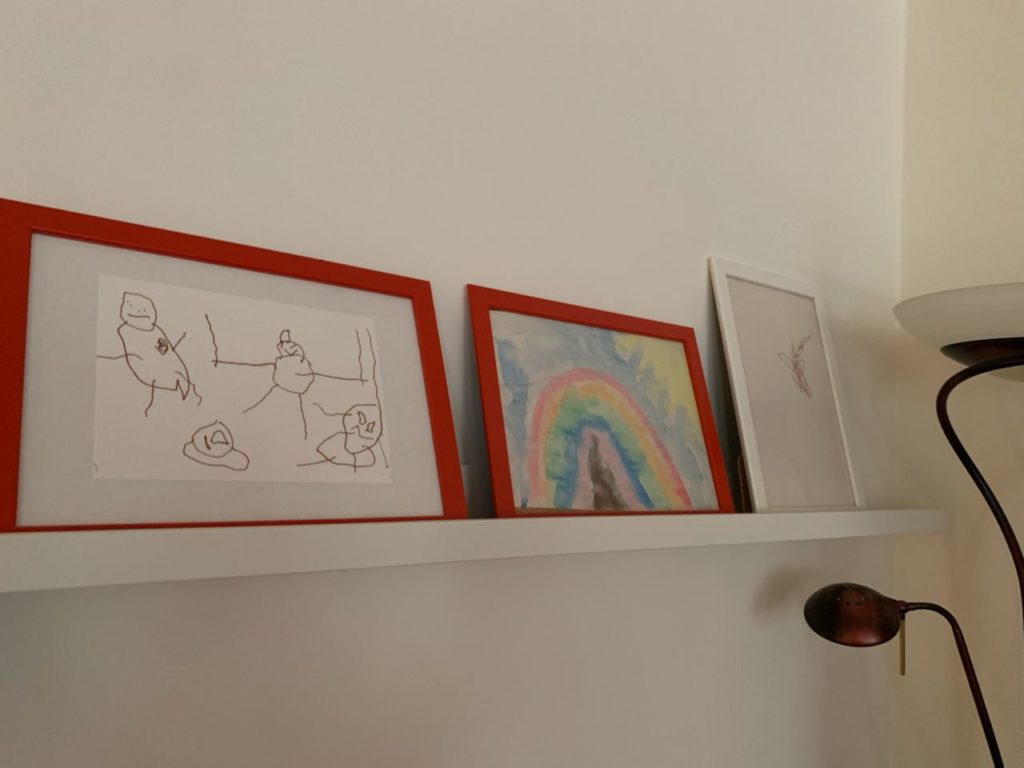
Part of healing for children in shelter is painting their emotions
Photo Yuliia Kyzyk
The financial violence is often connected to hindrance for a new housing
Experts explain that a lot of victims are experiencing economical abuse as a part of domestic violence. This kind of abuse manifests itself by financial control, making the victims financially dependent on their perpetrator. It makes the women feel trapped and creates hindrance for them to find a new apartment. The psychotherapist Annika Ekström Erikson explains that the goal here in most cases by the perpetrator, is to make it impossible for the woman to have no other choice but to stay with him. On the other hand, the perpetrator also makes the woman take loans in her name, and then takes the money from her by force. This also becomes the reason why a lot of women get in debt - unwillingly - which leads to their registration at the Enforcement Authority. In some cases, when the apartment is registered in the woman's name, or if they are sharing an apartment, the perpetrator often refuses to leave. This causes the woman to not be able to pay her bills, which also causes her name to be registered at the Enforcement Authority.
“Another problem is that the process of overtaking a contract is very long. If the apartment is under the woman’s name, but she cannot be there due to her situation, the man often stays there and refuses to leave or pay. Some of the victims even have to change their identity. However, sometimes, it is very important to get back the apartment, partially for use and also to be able to change it with another one.”, states Roger Höög
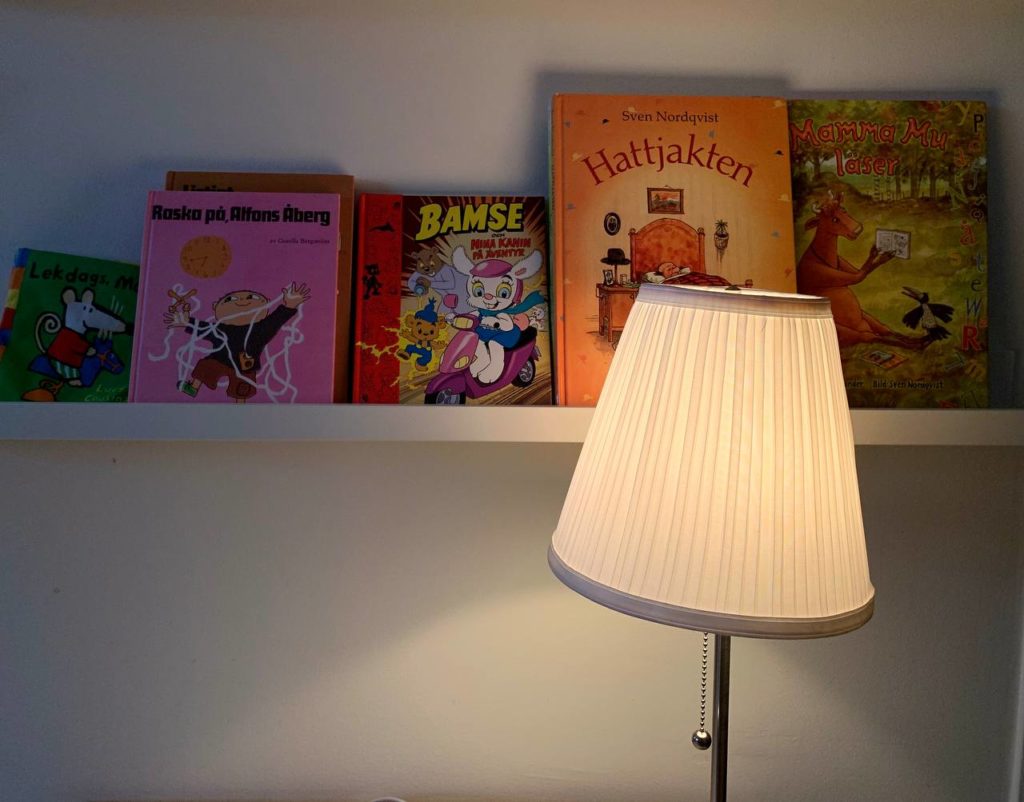
Children's new environment in shelter before having to move to a hostel
Photo: Yuliia Kyzyk
The issue of economic violence is also acknowledged by the police as well. Markus Antonsson, Police Officer and Manager within the section of domestic violence in Stockholm, says that women who become victims of domestic violence always face difficulties when trying to find a new stable home.
“In a lot of cases, the man often takes loans in the woman's name or finds other ways to put her in debt. This is unfortunately very common for women of domestic violence to have payment defaults registered at the Enforcement Authority which makes it harder and most of the time, impossible to get an apartment”, says Antonsson
Lack of data is making the problem non-existent on femicide
The lack of data on domestic violence leading up to women getting murdered because of the housing issue does not exist. The experts within the field are very aware of this problem and have confirmed that the problem of such victims exists, but there is no data. Which becomes problematic.
Kerstin Wiegl, a journalist with an experience of a ten-year-long investigation of mapping the murder of women due to domestic violence, also confirms:
“There is no specific statistics on how many women are ending up murdered or how many go back to their ex partner due to the housing issue, which is in itself a problem”, states Weigl
Researcher Joakim Petersson acknowledges this problem as well, and explains that when researchers try to request data from the police to analyze and study the problem connected to the housing issue in relation to victims of abuse, they often face difficulties due to high security and long waiting processes. Petersson confirms this by providing an example where he applied for data for his research and had to wait for two years to receive information from the police authority.
He says one main reason for this, is because the data provided by the police has a high level of secrecy. However, for researchers working to improve the system and to prevent crime, the accessibility for data should be easier.
“It is very difficult for researchers to evaluate the efficacy of the prevention measures of domestic violence because it is very difficult to get access to data from police and social services.”, says
Petersson
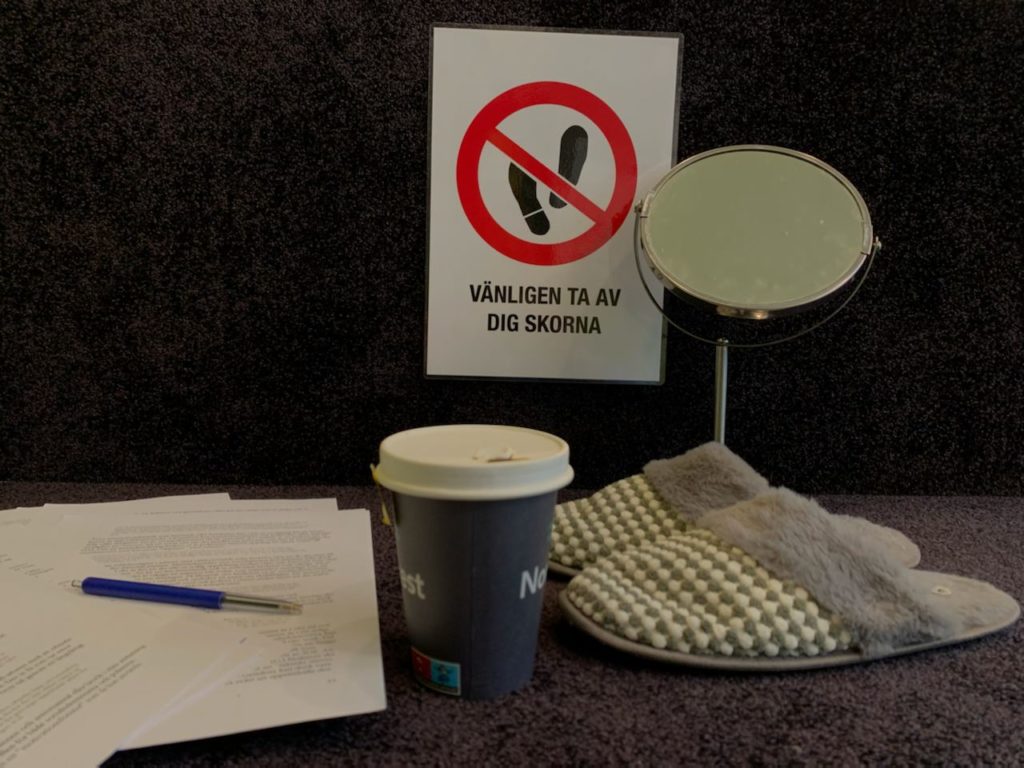
Womens temporary stop in a shelter, after which they have to run again
Photo Yuliia Kyzyk
Very often women do not understand that they are experiencing domestic abuse
Domestic violence manifests itself in different ways. In a lot of cases, women cannot understand that it is domestic violence they are experiencing. This is often related to the normalization process. The psychotherapist Annika Eklund Erikson explains that the abuser uses this tactic, step by step, to normalize a new reality for his partner. It can start with verbally diminishing or offending comments, then to yelling, then to a small push, or not letting his partner leave the apartment, and in some cases using his strength or size to instill fear in the woman, and from there it often escalates to a more severe physical abuse. And in cases when children are involved, and the woman finally finds strength to leave and look for help, the abuser would try to use the children as bait to continue harassing her.
“The woman needs to break free from the control zone to be able to function again. Power, control, and violence affect several parts of the woman's life. These consequences affect both her physical- and psychological health.”, says psychotherapist Annika Eklund Erikson
She explains that most women she meets are often suffering from physical pain. They can be on long-term sick leave or suffering from sleep deprivation, because of all the stress and trauma. During therapy, the women often feel difficulties putting their emotions into words.
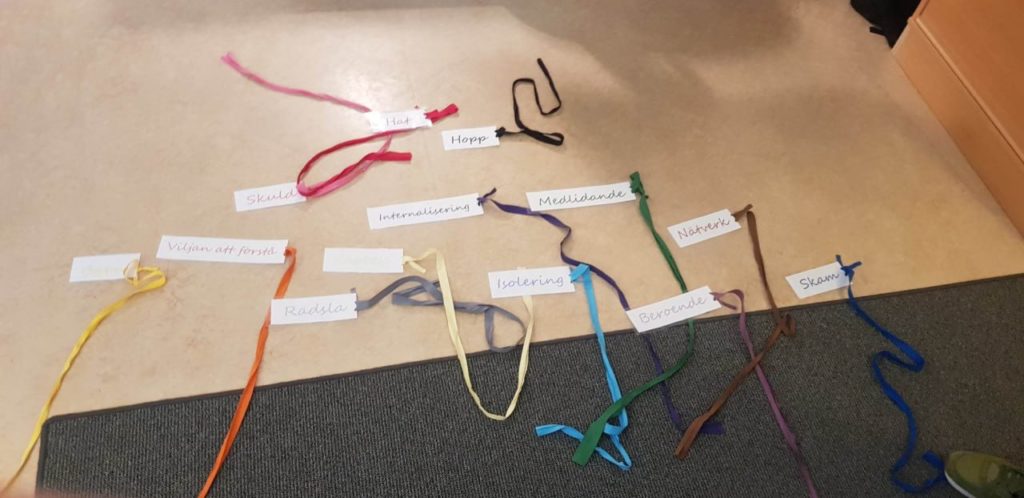
This is the part of the psychotherapy session that helps the women to identify their emotions to start the healing process of their trauma
Photo: Sara Isteffan
“One big reason why they go back, or meet someone with similar behavior, is mainly because of the normalizing process. Everything occurs systematically over time, it can start with insulting comments, and the violence comes over time. This makes the brain normalize the violent behavior, which makes the woman blame herself for his actions.”, states social worker at shelter
By clicking on each line on the above visualization, you can find out more specifics about each type of domestic violence.
Who is accountable?
Roger Höög, explains that housing companies, both private and public, should be involved in the problem of housing for women of domestic violence.
“If I put it this way, several parts carry the accountability for this. Besides the social service, politicians, and government officials, you have the property owners, depending on the area, because often times they are the ones who have control over the areas and are active all the time”, states Höög
Antonsson adds that society also carries a responsibility to help women and children falling victims of this kind of violence. And that there should be proper follow-ups. This is significant because most women experience heavy post-violence, which is more extreme as the perpetrator seeks the woman up directly after leaving prison, which does not often end well.
“Society needs to be more involved to help those women. The resources and regulations are not enough. There should be better follow up work from the police side for these victims. Because the after-violence is much heavier, especially when the perpetrator comes out of jail”, states Antonsson
Cooperating between private and state housing companies can be a solution
Experts explain that a solution can be to cooperate or require a certain percentage of the housing companies, both private and public, to save apartments for vulnerable groups, such as women and children suffering from domestic abuse. Another solution is to abolish the income requirement and not take the debt defaults from the Enforcement Authority into consideration to make it possible for the women to find a safe place, and in some cases save their lives.
“When it comes to local housing companies, some of them do offer women a chance to get prioritized in queues for an apartment. But about 50% of housing companies in Sweden are private, so they don’t have the same kind of obligation. Perhaps, we should legally mandate all housing companies to reserve a number of apartments for women who fall victims of domestic violence”, says Petersson
Cooperating between private and state housing companies can be a solution
Experts within the field explain that a solution can be to cooperate or require a certain percentage of the housing companies, both private and public, to save apartments for vulnerable groups, such as women and children suffering from domestic abuse. Another solution is to abolish the income requirement and not take the debt defaults from the Enforcement Authority into consideration to make it possible for the women to find a safe place, and in some cases save their lives.
“When it comes to local housing companies, some of them do offer women a chance to get prioritized in queues for an apartment. But about 50% of housing the companies in Sweden are private, so they don’t have the same kind of obligation. Perhaps, we should legally mandate all housing companies to reserve some number of apartments for women who become victims of domestic violence”, says Joakim Petersson, lecturer in Criminology at Örebro University
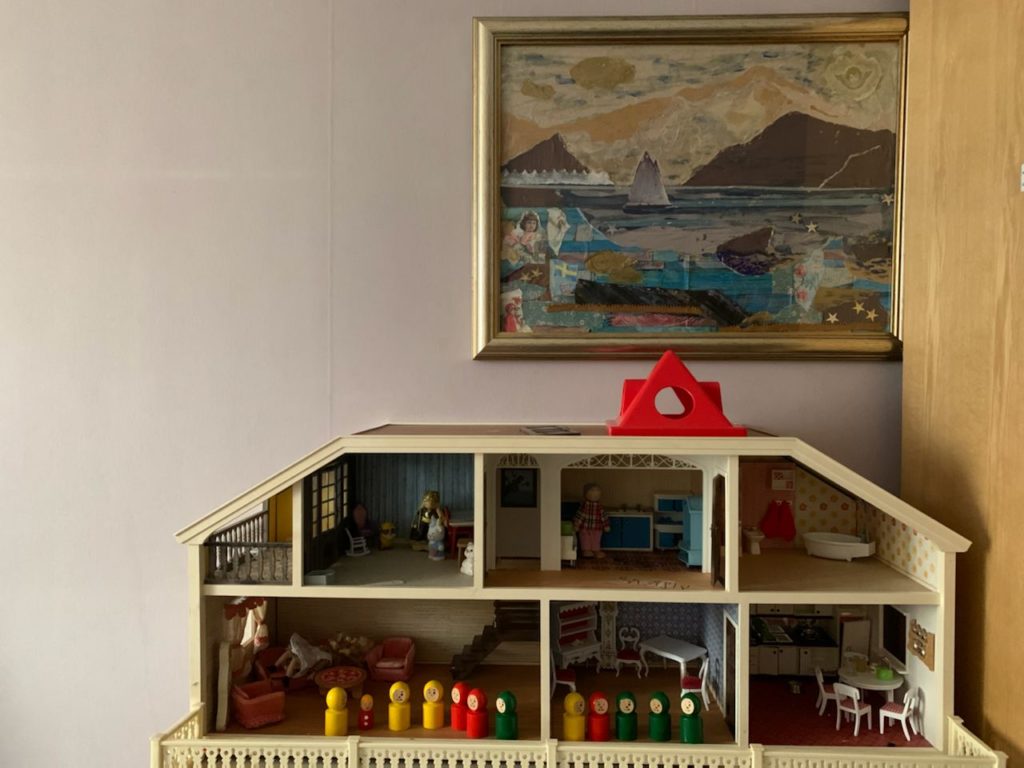
Room for mothers and children in a shelter
Photo: Yuliia Kyzyk
The lawyer, Roger Höög, also provides a solution to increase the prevention of domestic violence by helping more with the housing issue. He explains that the housing companies and landlords should apply privilege access for these women. Also, their income requirement should be abolished, as they are oftentimes unwillingly in debt because of the violence they have endured. This will help them to not run out of options and increase the prevention of not having to go back to their abuser.
“A good solution would be to abolish the income requirements to make not shut people out, especially vulnerable groups such as these women. Another solution would be to have privilege access in these cases when it comes to the queue system”, says Höög

A room for a temporary stop in a shelter where the women can breathe with a hopeful chance to start a new life
Photo: Yuliia Kyzyk
